This year’s Housing Design Awards show that the sector’s return to strength has brought with it bold and experimental design, with council housing and housing for older people in particular taking some unexpected forms
Once again, this year’s Housing Design Awards indicate that the housing sector is flourishing with an exceptionally high standard of design. After years spent languishing in the doldrums due to the recession, UK residential development appears to be gaining considerably in strength – indicated by this year’s entries – particularly in buoyant London.
The unique strength of the London market has been an accelerating trend in recent years but according to David Birkbeck, chief executive of housing lobbyist Design for Homes, which organises the annual awards, this year has been marked by the emergence of new trends too.
“There’s a real revival of this idea of the house,” he explains. “House types and designs are becoming more ambitious and experimental and this is very much in evidence in this year’s awards.” Other new trends evident in this year’s awards, include a gradual but unmistakable resurgence in council house building, prompted by the recent relaxation of tortuous Treasury rules concerning how local authorities are permitted to spend their existing council housing rent receipts. Several award entries provide examples of local councils either directly building homes themselves or establishing commercial development vehicles to build the properties on their behalf.
There also appears to be a new confidence in bold contemporary design, as Birkbeck again explains: “There’s still a great deal of contemporary buildings making historical references, as has been the case in recent years. But this year there also seems to be strong evidence of bold, contemporary design in its own right.”
But perhaps the 2015 awards’ most revealing trend reflects changing national demographics and society. Housing for older people makes a significant contribution to the entries tally but as Birkbeck reveals, it’s not the kind of housing for the elderly that we might have come to expect: “Many of the entries for older housing dispense with the kind of traditional design and interior decoration we may associate with the sector and shows instead that older people, too, have a clear interest not only in cutting-edge, contemporary design but in dense, inner-city living.”
OVERALL WINNER
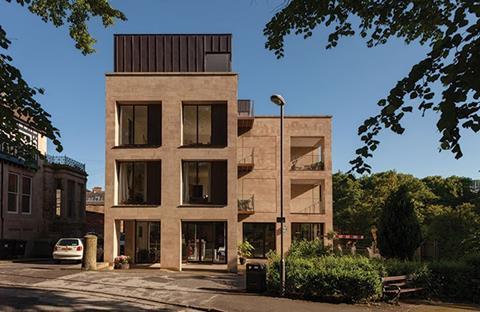
Parkside
Matlock, Derbyshire
ARCHITECT: Evans Vettori Architects
DEVELOPER/CONTRACTOR: Barncroft Homes
LOCAL AUTHORITY: Derbyshire Dales council
UNITS: 10
Few residential schemes more powerfully demonstrate the changing demographic and social landscape that UK housing will have to face in the years to come than Parkside. Of Parkside’s 10 units, nine have been purchased by residents in their eighties. Moreover, this is an open-market commercial scheme and was not designed as housing for older people. Its location right in the centre of Matlock is also significant as it rebuffs the perception that people prefer to move away from the centre of towns and cities as they get older. But arguably Parkside’s greatest revisionist aspect is its design. Not only has its contemporary design been enthusiastically embraced by the older generation, again challenging popular preconceptions, but the architecture itself is also one of consummate skill and beauty. With its almost classical poise and richly textured stone walls, Parkside exudes a powerful sculpted simplicity that makes for one of the most exquisitely crafted residential developments of the year.
LONDON COMPLETED WINNERS
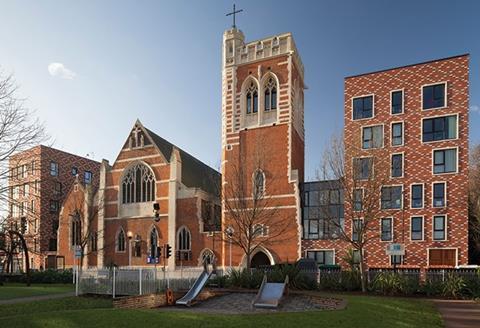
St Mary of Eton
Hackney Wick
ARCHITECT: Matthew Lloyd
DEVELOPER: Thornsett Group
CONTRACTOR: PJ Hegarty & Sons (UK)
LOCAL AUTHORITY: London Borough of Hackney
UNITS: 27
This remarkable development plunges deep into the improbably collegiate heritage of a gritty, post-industrial corner of east London to fashion an extraordinary new housing development that skilfully weaves historic restoration into a new contemporary architecture. The Victorian church at the centre of the site had been in an advancing state of disrepair ever since direct funding from Eton College – who founded it in the mid-19th century as part of their philanthropic mission to deprived parts of London – stopped in the 1950s. This historic association was an architectural cue for a new housing development built around the restored church and inspired by the monastic, quadrangular character of the gothic style that forged Eton College itself. The result is highly sensitive yet modern restoration whose historic roots are principally expressed in its footprint, courtyards and patterned brickwork.
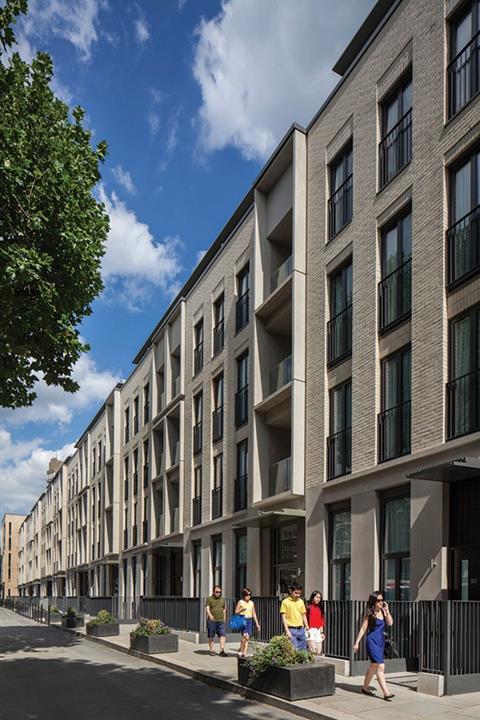
Portobello Square, Block 1
Ladbroke Grove
ARCHITECT: PRP
DEVELOPER: Catalyst Housing Group
CONTRACTOR: Ardmore
LOCAL AUTHORITY: Royal Borough of Kensington & Chelsea
UNITS: 126
The design of this development was allegedly prompted by a megalomaniacal missive from a prominent local councillor who announced that modern architecture would not be tolerated in this location. Happily, however, the ensuing design is no obsequious pastiche but a stirring contemporary reinterpretation of the ambassadorial London terraces that are such an intrinsic historic facet of this borough. At 5.7 ha, Portobello Square is one of the largest regeneration projects in Kensington and, in the manner of a typical London square, casts a large public park at its centre. A mighty parade of terraces unfurls around the park whose scale, vertical proportions and repetitive elevational rhythm are clearly based on historic London precedents. But the intricate articulation of the blocks strongly expresses a contemporary character. Portobello Square represents yet another modern evolution of the popular London vernacular but one not afraid to deploy the monumental scale and repetition that often characterises its historic forebears.
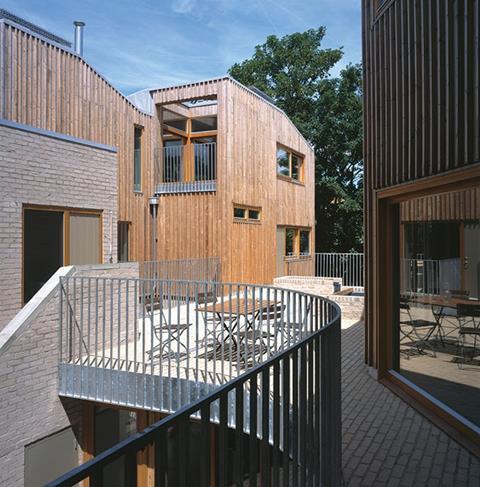
1-6 Copper Lane
Stoke Newington
ARCHITECT: Henley Halebrown Rorrison
DEVELOPER: Springdale Gardens
CONTRACTOR: Sandwood Design & Build
LOCAL AUTHORITY: London Borough of Hackney
UNITS: 6
Unlike countries like Germany, Canada and the USA, the cohousing residential model has yet to take a firm foothold in the UK, but if it is ever to do so, projects like this will be the reason why. The cohousing concept involves a collective of people privately developing and managing their own homes which are supplemented with shared, communal facilities such as those for dining or recreation. This is the model on which 1-6 Copper Lane is based and it is executed with all the inspiration and innovation one would expect of a radical housing model. A communal hall forms the core of the project around which six houses are clustered. Each house has two entrances, one on the ground floor and the other from a communal terrace placed on the roof of the hall. The scheme is memorable for the layered intricacy of its layout and the architect’s clever optimisation of the sense of shelter and seclusion its restrictive site offers.
LONDON PROJECT WINNERS
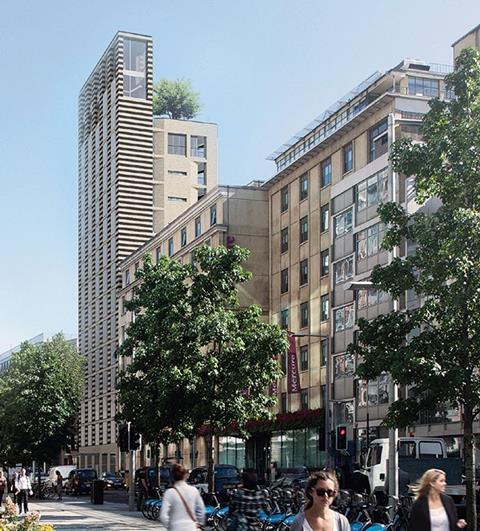
67 Southwark Street
Southwark
ARCHITECT: Allies & Morrison
DEVELOPER: Allies & Morrison
LOCAL AUTHORITY: London Borough of Southwark
UNITS: 9
With student housing, offices and their own practice nearby, Allies & Morrison has designed much in this north-western tip of the borough of Southwark. This new residential tower has the added interest of the the architect acting as developer. With a super-slim triangular form and composed almost entirely of duplex units, this 16-storey tower is part of the evolving landscape of a part of the borough still capitalising on the unprecedented regeneration boost it received with the opening of Tate Modern 15 years ago. And with bigger, cruder tower projects planned and underway nearby, this one is set to make a more measured impact on its historic context.
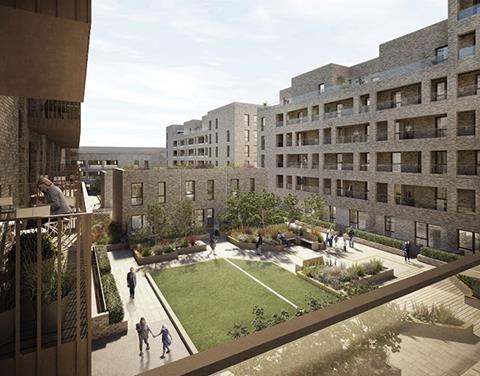
Gascoigne East
Barking
ARCHITECT: Levitt Bernstein / Allies & Morrison
DEVELOPER: East Thames / London Borough of Barking & Dagenham
LOCAL AUTHORITY: London Borough of Barking & Dagenham
UNITS: 421
The mammoth 1,579-unit Gascoigne estate is part of slew of regeneration projects across Barking that have all but cemented the east London borough’s position within residential development as one of the most architecturally ambitious and socially pioneering in the capital. It is one of a growing number of schemes where the local council, as joint client, is directly involved in building its own council homes, something that hasn’t happened on any meaningful scale for well over 30 years. Gascoigne Estate is a series of well articulated brick housing blocks arranged around a large urban park. With schools and retail provided, this marks a heroic piece of town planning that does not merely seek to create a new development but a new neighbourhood.
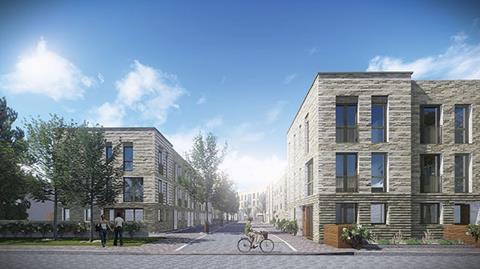
Barnet & Southgate College
Barnet
ARCHITECT: HTA Design
DEVELOPER: Barratt David Wilson North Thames
LOCAL AUTHORITY: London Borough of Barnet
UNITS: 396
When the local authority indicated that they would like a low-density scheme primarily comprising family units, the Greater London Authority stepped in and demanded the opposite – such is the fragmented hierarchy of London’s municipal administration that architects and developers are forced to negotiate. Thankfully, from this bureaucratic stalemate a remarkably intelligent scheme has somehow sprung forth with its gradated mix of family homes behind perimeter blocks, providing a convincing template for how mixed density sites can be successfully achieved.

Agar Grove
Camden
ARCHITECT: Mae / Hawkins Brown
DEVELOPER: London Borough of Camden
LOCAL AUTHORITY: London Borough of Camden
UNITS: 493
Yet another example of comprehensive estate renewal in London and part of the growing trend of local authorities once again building council houses directly. In a unique and ambitious move, it also employs a fabric-first approach to energy performance and aims to build all units to Passivhaus standards. The notorious 1960s estate will also see 112 of its existing low-rise houses demolished and its central 18-storey tower block stripped back to its structural frame for a comprehensive retrofit in which new flats will be inserted.
NON-LONDON COMPLETED WINNER

The Avenue
Saffron Walden, Essex
ARCHITECT: Pollard Thomas Edwards
DEVELOPER: Hill
CONTRACTOR: Hill
LOCAL AUTHORITY: Uttlesford council
UNITS: 76
A former Housing Design Award project winner in 2011, this noteworthy scheme has been rightly recognised again now it is complete. Local Essex vernacular has proved a popular stylistic precedent in recent years for several housing developments within the county but this scheme executes the theme with what the judging panel referred to as particular “elegance and simplicity”. The development evokes the distinctive rustic style of local context by featuring houses inspired by the barn typology – variously clad in brick, stone, cedar shingles or black stained shiplap timber boarding. All of which is surmounted by an animated roofscape of pitched roofs that merges seamlessly with its conservation area context. As well as the barn typology, the development also makes imaginative use of the traditional farmstead model, creating groups of housing arranged around a courtyard with a narrow entrance and surrounded by high brick walls. The site also offers verdant landscaping and a rich historic pedigree – it is part of a school campus once attended by Ralph Erskine.
NON-LONDON PROJECT WINNERS
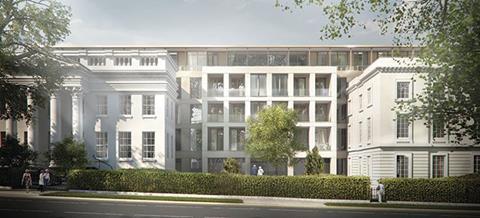
One Bayshill Road
Cheltenham, Gloucestershire
ARCHITECT: Glenn Howells
DEVELOPER: Pegasus Life
LOCAL AUTHORITY: Cheltenham council
UNITS: 51
This sensitive refurbishment and new-build project involves the restoration of two fine but dilapidated Georgian villas and their incorporation into an extra-care home for older people. A new-build element links the villas and while its elevation is expressed in contemporary form, its Bath stone and rectilinear proportions provide a sensitive reconciliation with the rich neo-classical architecture on either side. The new-build element also replaces clumsy and visually disruptive additions from the 1970s.
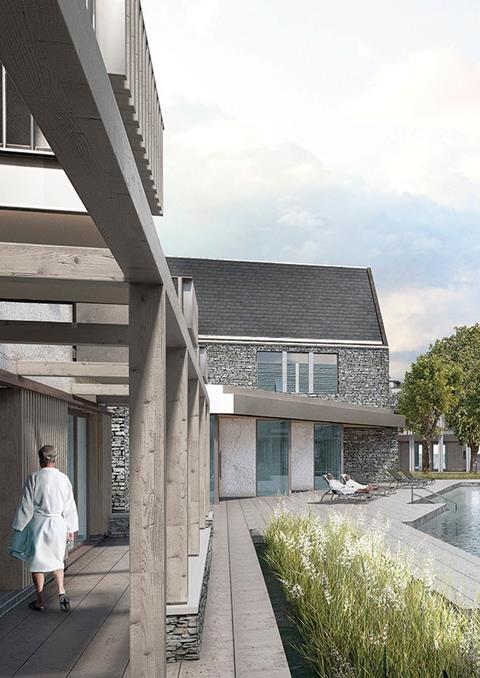
Steepleton Retirement Community
Tetbury, Gloucestershire
ARCHITECT: Proctor and Matthews
DEVELOPER: Pegasus Life
LOCAL AUTHORITY: Cotswold council
UNITS: 112
A development nestling in the Gloucestershire countryside and located in the shadow of the Prince of Wales’ Highgrove Estate might not be the most natural location for a cutting-edge contemporary residential settlement but that is what is to be built at Steepleton. As well as its selection of one and two-bed homes offering a variety of care options for older people, this pioneering retirement village will include mixed-use amenities such as a cafe, spa, library, village hall and even a farm shop selling produce grown by residents.
A sprawling swimming pond will be located at its centre. Surrounding these amenities will be sculpted, contemporary buildings cast from rich and textured stonework drawn from local vernacular.
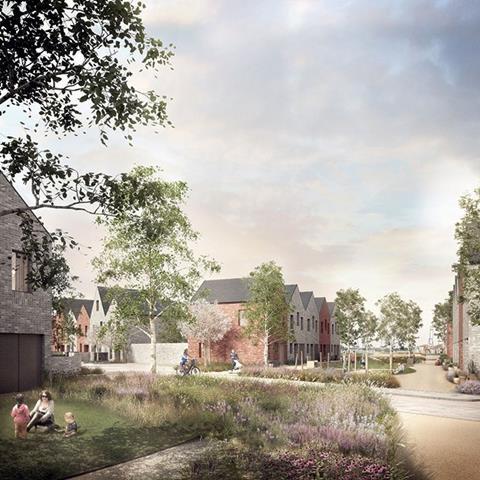
St Chad’s
Tilbury, Essex
ARCHITECT: Bell Phillips Architects
DEVELOPER: Gloriana (Thurrock council)
LOCAL AUTHORITY: Thurrock council
UNITS: 128
Named in honour of Elizabeth I after her rallying speech to the Tilbury troops in preparation for battle with the Spanish Armada, Gloriana is a grand name for a new venture with grand ambitions. Gloriana is a commercial development vehicle wholly owned by Thurrock council established to help the council meet its target of delivering 20,000 homes by 2021. St Chad’s is the first salvo in this mission and is representative of the resurgent practice of councils directly building council houses. Based on a number of tightly prescribed housetypes, the development includes family houses with pitched roofs of varying angles arranged around a series of landscaped avenues and overlooking a linear park.
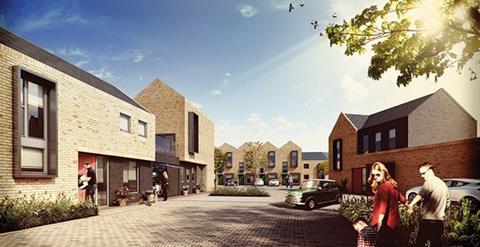
Cottam Hall
Preston, Lancashire
ARCHITECT: DK Architects
DEVELOPER: Barratt Homes
LOCAL AUTHORITY: Preston city council
UNITS: 104
Cottam Hall is an attempt to provide large-scale, low-cost housing in the north-west of England but with the quality and rigour of high-end private housebuilder housing. Accordingly, it has been developed from a number of two and three-storey Barratt house-types, chiefly expressed in brickwork and a combination of flat and pitched roofs. The masterplan is also characterised by a number of key design features such as continuous active frontages, key nodal points and the abandonment of large parking courtyards in favour of parking on individual plots.
COMPLETED HAPPI WINNER
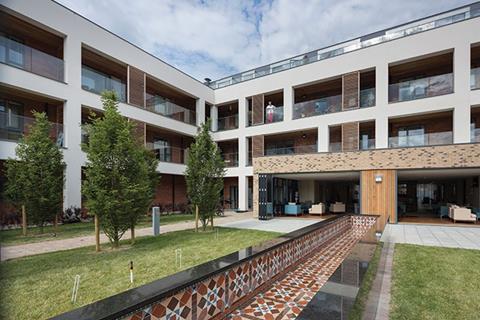
St Bede’s Extra Care Housing
Bedford, Bedfordshire
ARCHITECT:PRP
DEVELOPER: Orbit Homes
CONTRACTOR: Mansell
LOCAL AUTHORITY: Bedford Council
UNITS: 104
This masterful example of assisted housing for older people is yet another demonstration of the high quality of architecture now being regularly applied to this growing residential sector. This radical scheme provides the first example of shared ownership housing for older people in the UK, despite being built and paid for by the Homes and Communities Agency. As such it is another indication of the wider impact a growing older population is having on our built fabric. The scheme is equally pioneering in design terms, forging a sympathetic contemporary architecture that merges seamlessly with its conservation area context.
SPECIALISED HOUSING AWARD
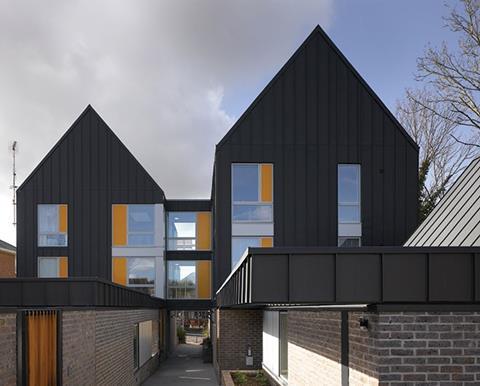
Bradbury Place
Andover, Hampshire
ARCHITECT: Design Engine
DEVELOPER: Enham Trust
LOCAL AUTHORITY: Test Valley council
UNITS: 8
Bradbury Place was praised as an exemplary model of specialised housing that spoke of an encouraging future for this small but important housing sector. The development provides just eight housing units for disabled people who wish to live independently, but it has a much wider social reach. Prominently located at the front of a local housing estate, it marks a bold attempt to bestow a level of profile and community engagement that is not commonly associated with specialised housing of this kind.




























No comments yet